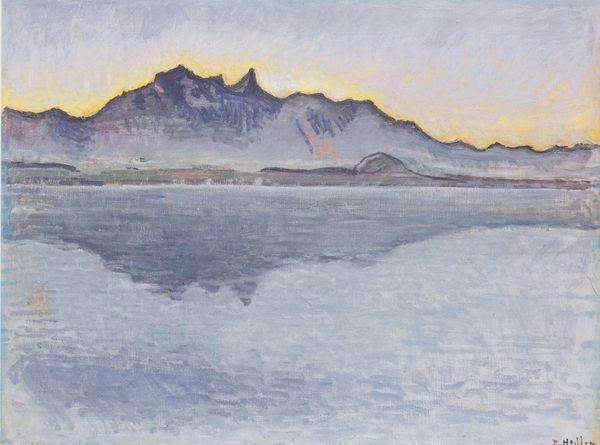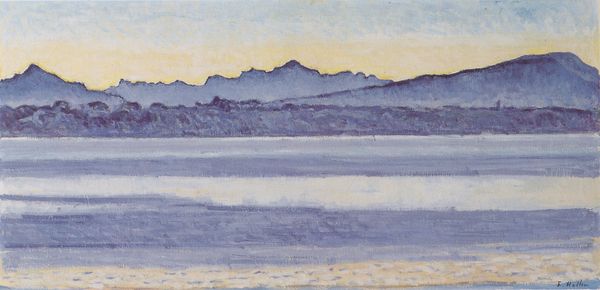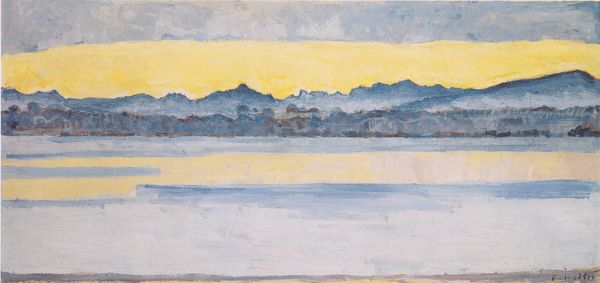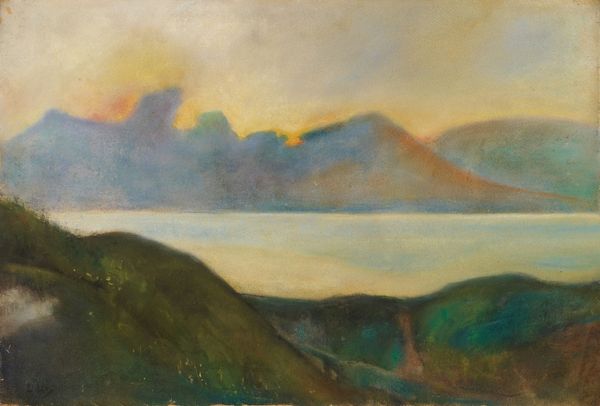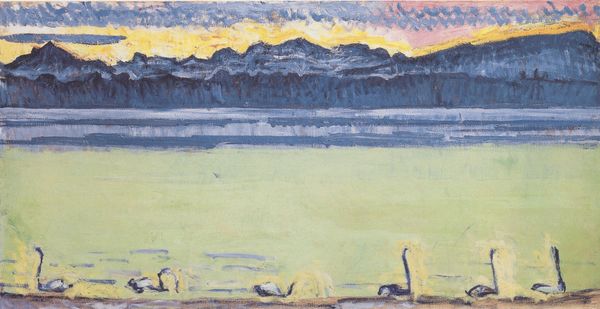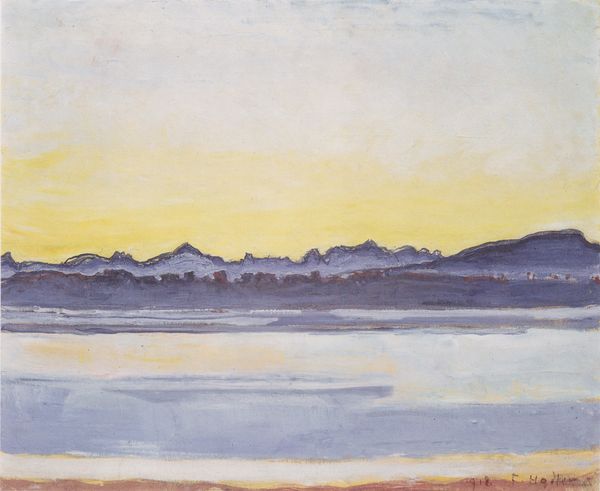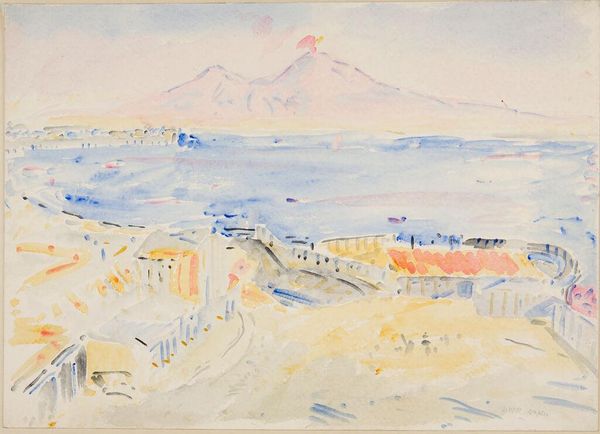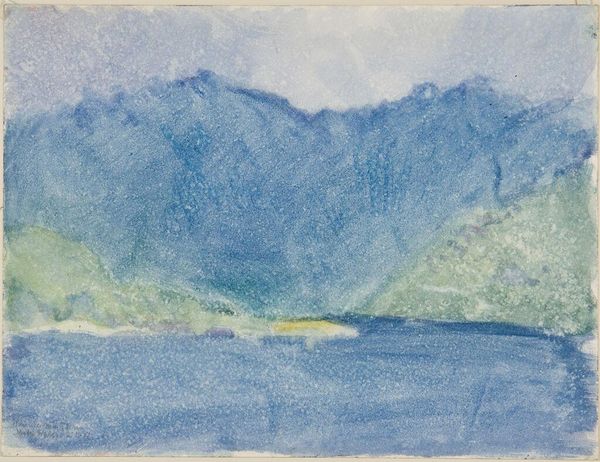
painting, watercolor
#
boat
#
water colours
#
painting
#
asian-art
#
landscape
#
form
#
watercolor
#
geometric
#
mountain
#
orientalism
#
line
#
watercolor
Copyright: Public domain
Curator: Let’s talk about "Tibetian Way," a watercolor on canvas completed by Nicholas Roerich in 1931. Editor: Immediately striking, isn't it? That calming wash of blues and yellows gives it such a peaceful quality, almost dreamlike. The crisp, geometric mountains fade into each other like stanzas of poetry. Curator: Roerich, a fascinating figure, deeply believed in the power of art as a universal language to promote peace. He saw beauty in the landscapes of Central Asia and tried to elevate them, give them symbolic significance. He travelled extensively to the region and was deeply invested in Eastern spiritualism. Editor: How do we position the lens of orientalism here? Because his devotion and pursuit might still risk simplification or exoticization of Tibetan culture, or perhaps that region's communities or sociopolitical status during Roerich's travels. What statements were those organizations or movements associated with the artist actually making about Tibet at the time? Curator: It's a critical lens. Orientalism definitely plays a role when considering how Western artists depicted the East. However, Roerich himself established various cultural organizations aimed at intercultural exchange. It makes his work both complex and very much of its time. Consider the image of the small boat, that looks so fragile against those dominating, layered blues. Editor: Absolutely. That little boat, the almost ethereal mountains... they remind us of human endeavor amidst nature’s overwhelming power and also our fragility in the face of it. I imagine it reflecting ideas of spiritual transcendence through nature—very much a feature of movements in his lifetime, and through his legacy even now. Curator: And think about his involvement with the Roerich Pact, a treaty promoting the protection of cultural institutions during wartime. His work speaks to a yearning for beauty and preservation. Editor: Seeing "Tibetian Way" has pushed me to understand how his cultural and philosophical beliefs shaped not just this individual piece, but his larger mission around public art policy too. I suppose Roerich’s blending of spirituality and advocacy gives the art more strength, while posing complicated historical issues for us now. Curator: Agreed. I see Roerich's work, including this quiet watercolor, as an urgent reminder of how we are all connected through art and a sense of shared cultural heritage—regardless of whether the lens is aspirational, historically murky, or both.
Comments
No comments
Be the first to comment and join the conversation on the ultimate creative platform.

